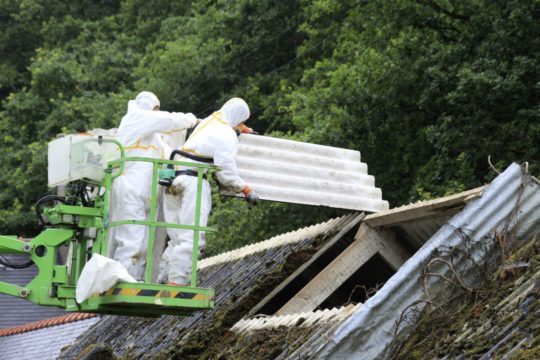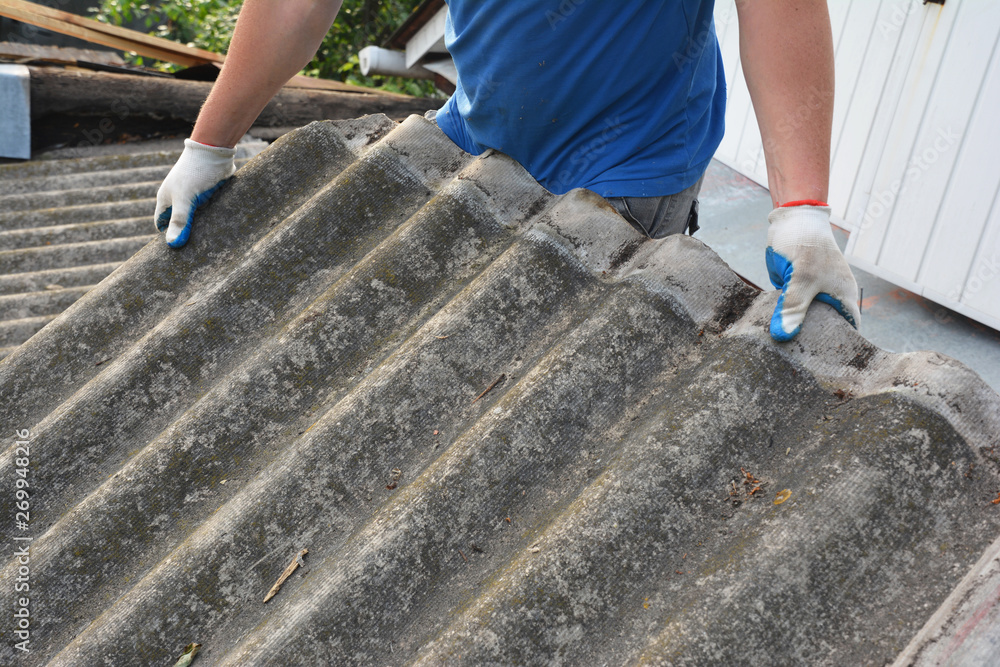Community Awareness About Asbestos Roof Dangers Video Guides For Safe Removal
Successful Asbestos Roof Removal Stories How To Get Your Roof Replaced For Under 1000
Asbestos management plans are important tools for the safe handling and management of asbestos materials in various environments. With the health risks related to asbestos exposure, including lung disease and different critical respiratory conditions, having a complete management plan is essential for any facility that will contain asbestos.
The creation of asbestos management plans entails a radical assessment of the premises the place asbestos might be current. This includes figuring out the types of materials that include asbestos and evaluating their condition. Regular inspections are needed as a end result of the integrity of asbestos-containing materials can degrade over time, raising the risk of airborne asbestos fibers.

Once the assessment is conducted, the plan must embody clear procedures for managing asbestos safely. This includes guidelines on the method to deal with, maintain, and, if needed, remove asbestos-containing materials. Proper labeling and signage are also essential to guarantee that staff and guests are aware of areas that will pose a risk.
Benefits Of Asbestos Roof Removal Best & Cheap Removal Services Available
Training and education play a significant position within the profitable implementation of asbestos management plans. Employees who could come into contact with asbestos have to be educated concerning the hazards, safe work practices, and emergency procedures. Regular training periods may help hold safety at the forefront of workplace culture.
The management plan should define specific duties for staff and management. Designating an asbestos coordinator can streamline the method of monitoring, reporting, and communicating about asbestos-related issues. This individual serves as some extent of contact for questions and considerations relating to asbestos safety.
Documentation is a key facet of asbestos management plans. Maintaining correct information of inspections, incidents, training, and maintenance activities is important for accountability and ongoing risk assessment. This documentation can even show invaluable in case of regulatory inspections or legal inquiries.
Impact Of Asbestos On Property Value In Sydney Safe, Reliable And Experienced Removal Services
In addition to identifying materials and implementing safe handling practices, the plan must outline response protocols for asbestos-related emergencies. Importance Of Monitoring Air Quality During Removal. These protocols should embrace measures to comply with in the event of a cloth breach or suspected fiber launch. Providing clear steps might help mitigate risks and ensure swift action
Periodic evaluate and updating of the asbestos management plan are very important to mirror any modifications in regulations, workplace circumstances, or materials present. Continuous improvement is essential to adapt to new information or technologies related to asbestos safety. Stakeholders must be concerned on this process to ensure that the plan remains relevant and effective.
Asbestos Removal Liability Insurance Considerations Removal & Replacement Of Roof Asbestos
Compliance with local and nationwide regulations concerning asbestos is non-negotiable. Organizations should keep informed about applicable laws and guidelines that govern asbestos dealing with and disposal. This helps keep away from legal penalties and enhances the overall safety culture throughout the group.
Community awareness is another important consider effective asbestos management plans. Engaging with native authorities, health companies, and the community can foster a higher understanding of asbestos-related issues. This collaboration ensures that each one parties are informed about potential risks and safety measures in place.
Asbestos management plans don't operate in isolation; they're a half of a broader health and safety strategy. By prioritizing the well-being of workers and the encircling community, organizations can contribute to a safer environment. The integration of asbestos management with other safety protocols permits for a holistic strategy to workplace safety.
Commercial Asbestos Roof Removal Services Video Guides For Safe Removal
The objective of an asbestos management plan is not just compliance but additionally proactive risk management. By effectively figuring out hazards and implementing mitigation methods, organizations can significantly cut back the probability of asbestos exposure. This commitment to safety finally protects both staff and the bottom line.
Effective communication in regards to the asbestos management plan is essential for fostering a tradition of safety. Clear dissemination of information ensures that everyone understands the risks and the measures in place to mitigate them. Providing transparent reporting channels encourages employees to voice issues and contribute to safety efforts.
Finally, the importance of periodic monitoring cannot be overstated. Regular audits of the asbestos management plan assist identify areas for enchancment and confirm that safety measures are followed. Continuous analysis creates a feedback loop, selling a safer working environment.
In summary, asbestos management plans serve as essential frameworks for controlling and managing the risks associated with asbestos exposure. Through thorough assessment, effective communication, ongoing training, and common updates, organizations can create safe environments for his or her staff and the community. The focus ought to always be on proactive measures, compliance with regulations, and a robust safety tradition.
Regulatory Updates For Asbestos Roof Removal Find A Licensed Asbestos Removalist
By making certain that every aspect of the plan is well-executed, organizations can considerably lower the risks tied to asbestos materials. This ongoing commitment to safety won't solely protect people but also enhance organizational status and trust.
Continuous adaptation and refinement of asbestos management plans will finally result in a more knowledgeable workforce that prioritizes safety above all. Such a tradition is crucial for achieving long-term safety objectives and ensuring the health of all stakeholders concerned.
Handling Asbestos Shingles And Tiles Safely Removal Of Asbestos Roof In Area
Ultimately, the well-being of employees and the environment should guide the development and implementation of any asbestos management technique. By remaining vigilant and diligent of their method, organizations can navigate the complexities of asbestos management effectively.
In conclusion, the roadmap for asbestos safety is challenging however important. A fastidiously crafted and executed asbestos management plan, complete with thorough assessments, communication protocols, and ongoing education, lays the groundwork for a safe and compliant workplace. This proactive strategy fosters a protective environment for all these concerned, solidifying the commitment to safety for the future.
- Asbestos management plans outline protocols for identification, assessment, and management of asbestos-containing materials in numerous settings, notably in buildings.
- Regular inspections and risk assessments are crucial parts of an asbestos management plan, guaranteeing ongoing monitoring and up to date information regarding potential hazards.
- Training for personnel on asbestos awareness and safety measures is essential, ensuring that employees are knowledgeable concerning the risks and procedures related to asbestos exposure.
- Development and maintenance of a listing of asbestos places, types, and circumstances allow for informed decision-making when planning renovations or demolitions.
- Emergency response procedures tailored for asbestos-related incidents help minimize health risks during surprising conditions involving asbestos disturbance.
- Effective communication methods inside a company inform all stakeholders of asbestos management plans, highlighting duties and inspiring a culture of safety.
- Documentation of all asbestos-related activities, including removal, encapsulation, or repair, is necessary for compliance with regulatory requirements and for future reference.
- Stakeholder engagement, together with occupants and neighboring properties, is important to lift awareness and tackle considerations regarding asbestos management and safety practices.
- Integrating asbestos management plans with overall health and safety insurance policies can create a cohesive method to office safety and environmental health.
- Regular critiques and updates of the asbestos management plan ensure relevance and effectiveness, adapting to any changes in regulations, building occupancy, or material situation.undefinedWhat are asbestos management plans?
Asbestos Roof Removal Waste Management Removal Of Asbestos Roof In Area

Asbestos management plans are documents that outline how to manage asbestos on a property. They element the situation, condition, and types of asbestos-containing materials, together with methods for safe monitoring, maintenance, and mitigation.
Why do I need an asbestos management plan?
An asbestos management plan is essential for shielding health and safety. It ensures that each one potential asbestos hazards are recognized and managed appropriately, minimizing the risk of exposure to people on the property.
Post Asbestos Roof Removal Cleaning Removal And Disposal Of Asbestos
Who is answerable for creating an asbestos management plan?
Typically, the property owner or employer is answerable for creating and implementing an asbestos management plan. It is often really helpful to consult with certified professionals or licensed asbestos surveyors to make sure compliance with regulations.

How typically ought to my asbestos management plan be reviewed? Evaluating Contractors For Asbestos Roof Services.
Asbestos Roof Removal Services In Sydney Asbestos Storm Damage Services
Asbestos management plans should be reviewed a minimal of each 12 months or whenever vital adjustments occur on the property, similar to renovations or harm to areas containing asbestos. This ensures that the plan remains up-to-date and effective.
What ought to I do if my asbestos management plan identifies risks?
If risks are identified, quick action ought to be taken in accordance with the plan. This may embrace repair, encapsulation, or removal of asbestos materials by licensed professionals, along with notifying affected individuals in regards to the risks and safety measures.
Can I manage asbestos issues myself without a plan?
Asbestos Roof Removal Service Reviews And Feedback Cost To Remove Asbestos Garage
It just isn't advisable to manage asbestos points without a formal plan. Improper handling can lead to critical health risks and legal penalties. Consulting a qualified professional is important for safety and compliance with regulations.
How do I discover a certified professional for my asbestos management plan?
To find a qualified professional, look for licensed asbestos consultants or surveyors in your space. It is necessary to check their certifications, experience, and reviews to ensure they meet regulatory requirements and have an excellent observe report of safety.
Asbestos Roof Removal Case Studies Sydney Asbestos Roof Maintenance Services
What occurs if I don’t have an asbestos management plan?
Lack of an asbestos management plan can result in non-compliance with native regulations, resulting in heavy fines, legal liability, and increased health risks for occupants. It is essential to have an effective plan in place to manage asbestos safely.
Is training required for those handling asbestos management plans?
Yes, individuals involved in managing asbestos should receive appropriate training. This includes understanding the risks, the specifics of the management plan, and safe work practices. Regular training ensures everyone is prepared to respond to potential asbestos issues effectively.
article source additional info